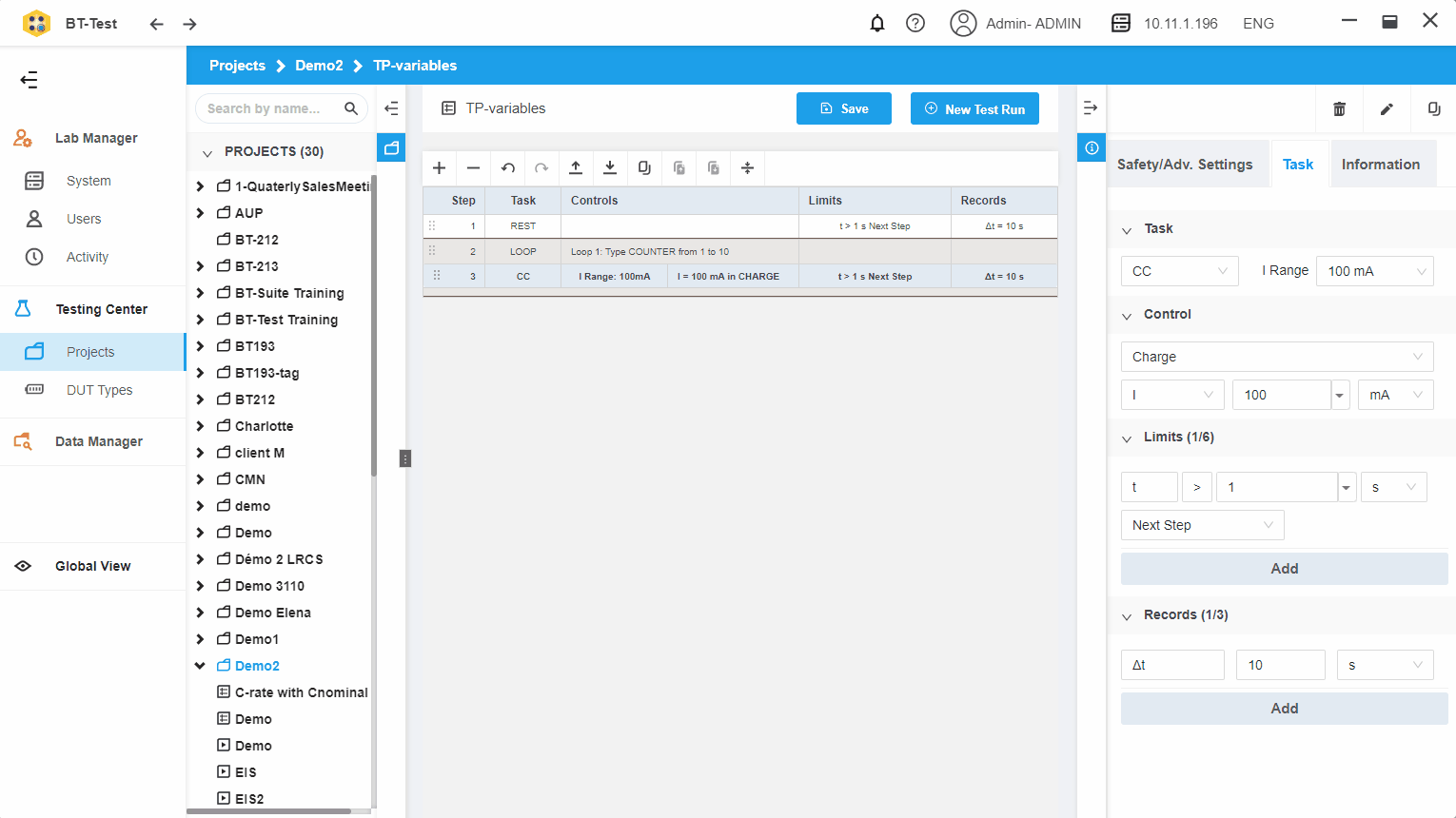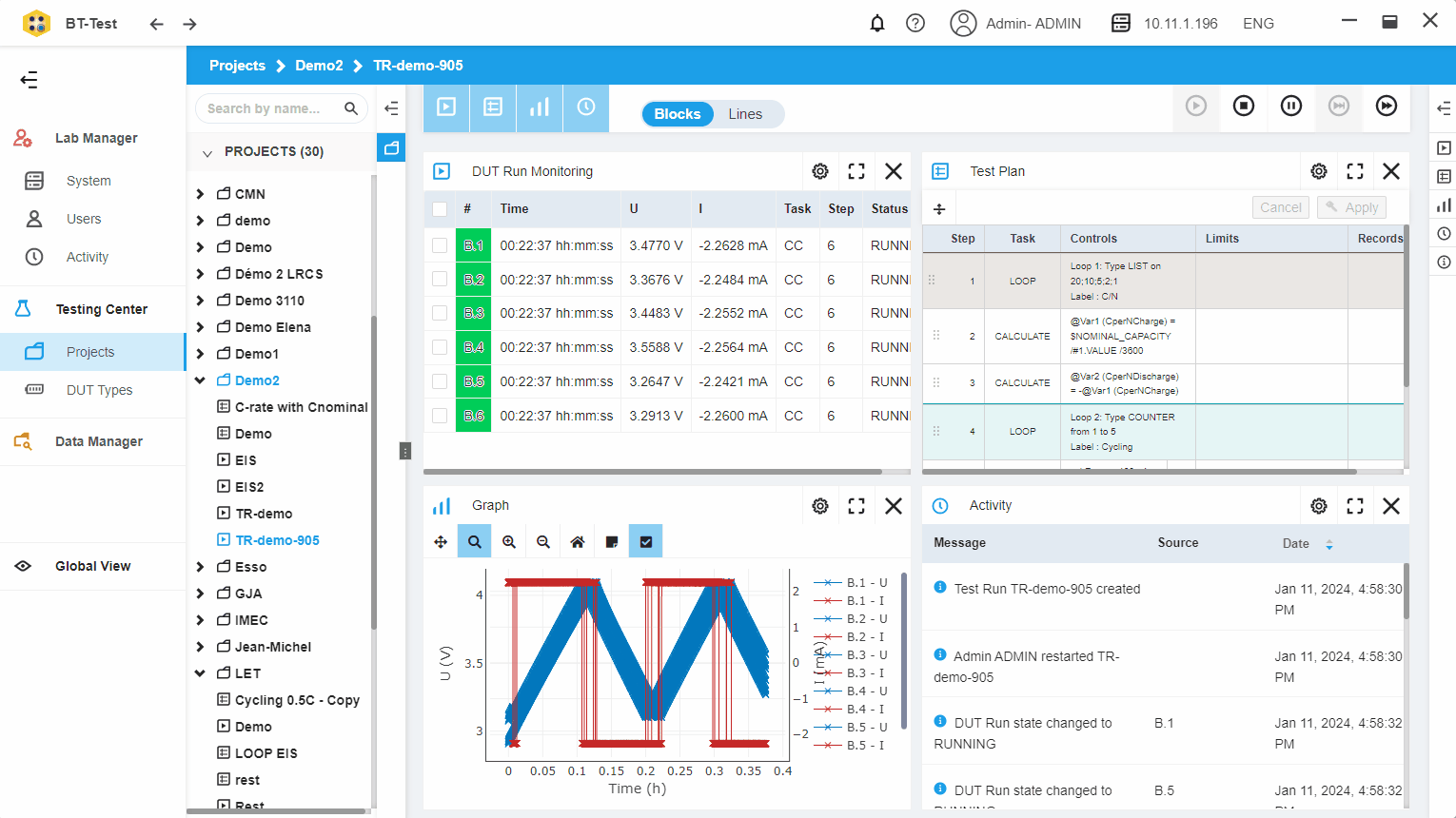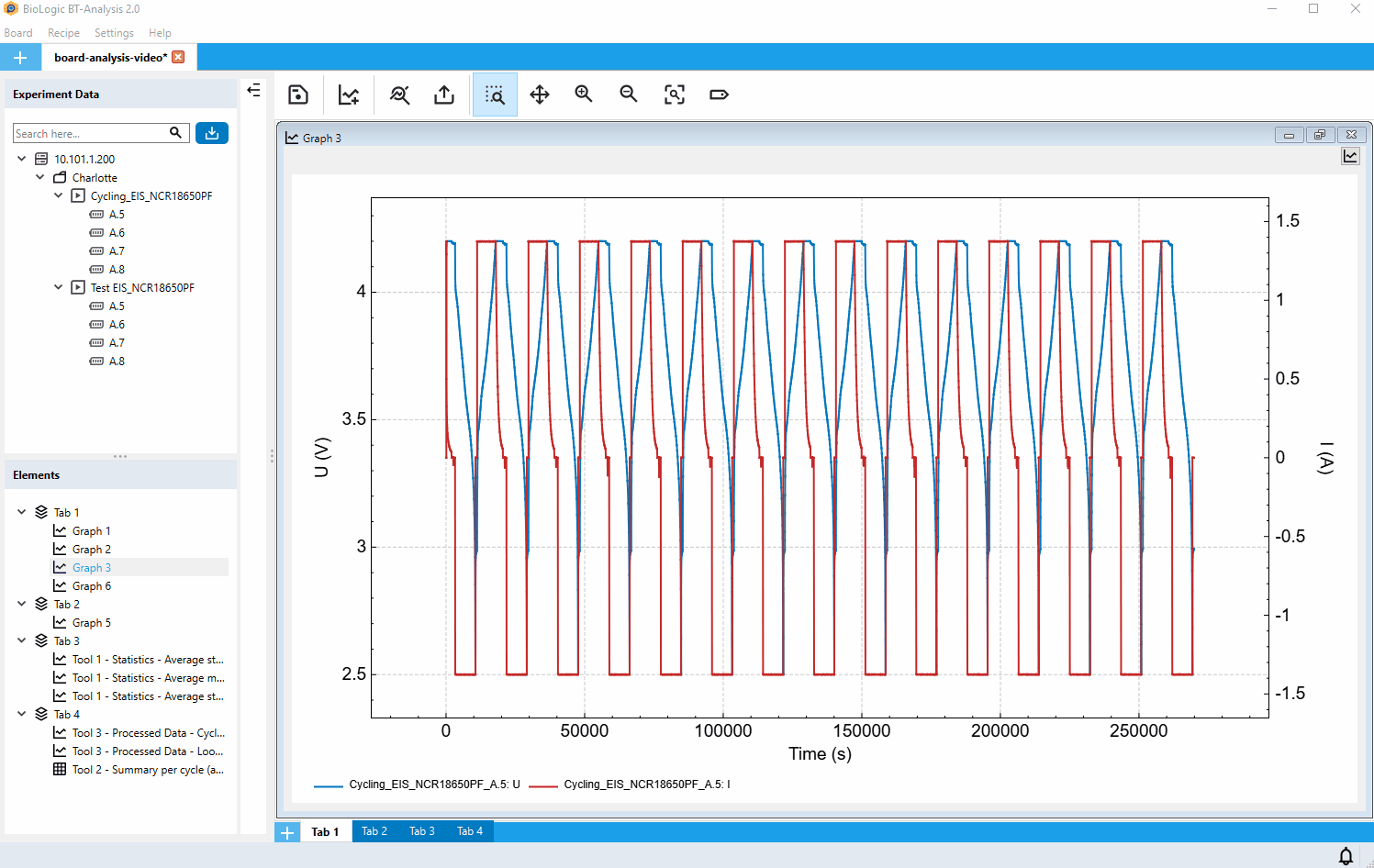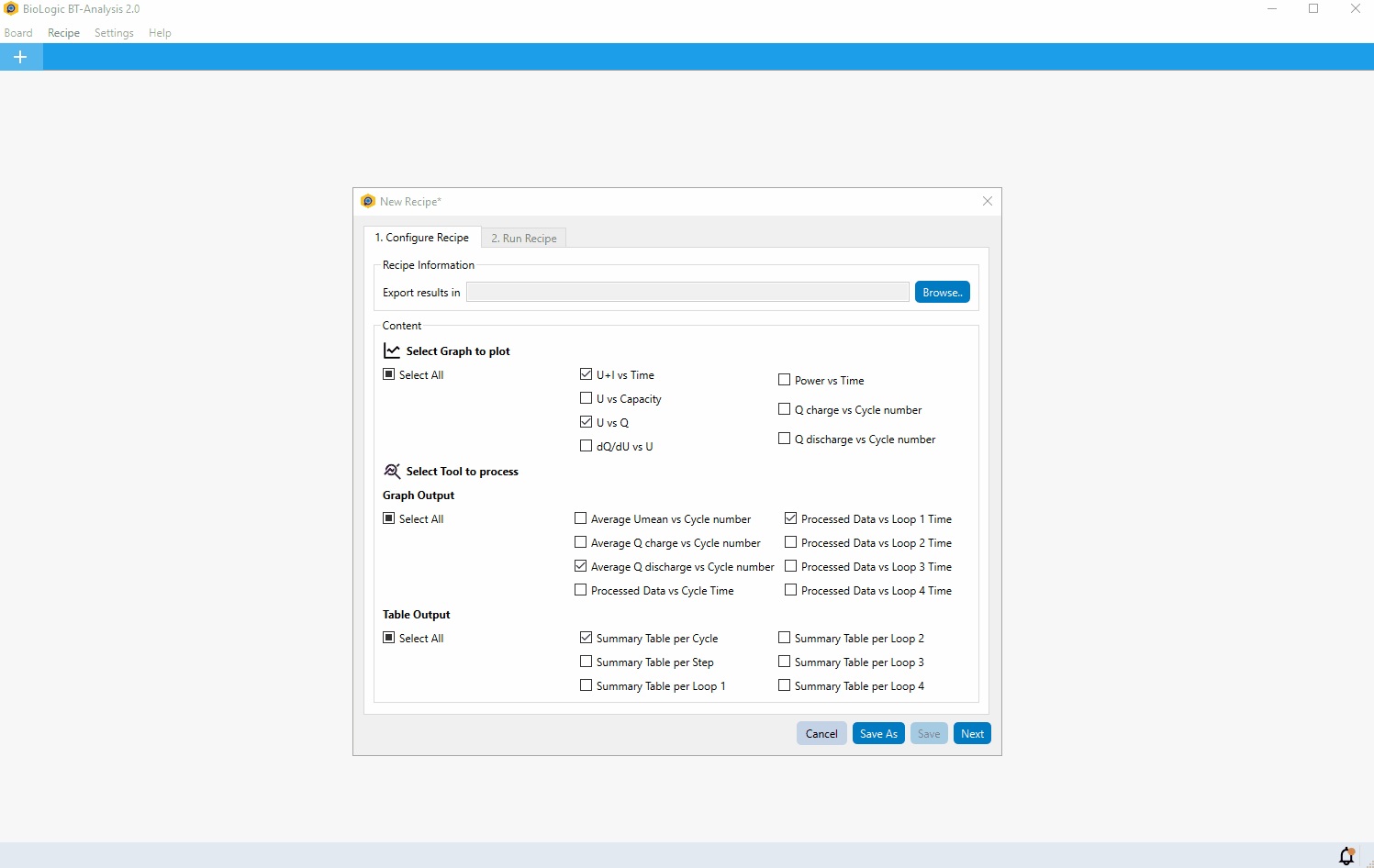BT-Lab® Software Suite.
for BCS-900 Battery Cyclers
BT-Lab® Suite software is designed to control battery cycling and analyzed batch data generated by BioLogic BCS-900 series Battery Cyclers
BT-Lab® Suite: Comprehensive from reliable tests to efficient analysis
Effortless Battery Cycling and Automated Batch Data Analysis
The BT-Lab® Software Suite simplifies battery cycling with its user-friendly interface and adaptable design. Uncompromising Reliability: Embedded BT-Test™ continuously monitors experiments, ensuring consistent and accurate results. Powerful Data Analysis: BT-Analysis™ software streamlines the process, allowing for rapid and insightful interpretation of complex data sets based on user defined setting. Built for Batteries: The software includes essential features like native EIS, providing researchers and engineers with comprehensive tools to gain a deeper understanding of battery behavior and performance.
Need support information or the latest version of BT-Lab Suite Software?
BT-Test™
BT-Test™ acts as the central hub for designing, running, and monitoring battery testing experiments. It provides a user-friendly interface to configure various testing techniques, including:
- Constant Current / Voltage/ Power / Load
- Voltage / Current Scan
- DCIR Direct Current Internal Resistance
- G-ACIR Galvano Alternating Current Internal Resistance
- Galvano / Potentio EIS
- Loop (up to 4 loops possible)
- Rest
- Up to ten variables in the CALCULATE task
- Arbitrary User Profile (AUP)
- 128 steps
- Up to 4 limits per step
- Up to 4 recording conditions per step
BT-Test™ allows for complex testing profiles with up to 128 steps, each containing 4 user-defined limits and 4 distinct recording conditions.
It also offers real-time data access and monitoring, so researchers can “modify on the fly” any running experiment or dynamically adapt tests based on measured values and pre-defined variables. This flexibility ensures experiments are optimized to gain deeper insights into battery behavior.
Key Features
Testing Center: Efficient battery testing is empowered through unparalleled flexibility by intuitive Test Run setup, real-time data visualization, and remote access capabilities. Users can effortlessly create and run cycling tests and automatically generate graphs for immediate insights into battery performance and even Modify Test Plans On-the-Fly based on real-time measurements. With three types of variables, User Variables, Task Variables, and DUT Parameters, values are calculated at the end of each task or loop and adapted based on up-to-date measurements. Up to three experimental limits can be selected on measured values such as time, current voltage, temperature, or on a variation of this value. Different, selectable actions may be taken when a limit is reached, such as “stop” the experiment or “go to the sequence N”. Additionally, safety limits can be added on each channel to shut down the channel in the event something goes wrong during the experiment.

Lab Manager: Managing channels, users and instruments is simple, with easy filter options to quickly view DUT Run status, user activity and any messages.
Data Manager: Easily select and manage data for analysis and export.
Global View: Monitor all channels simultaneously on an advanced Global View. The status of each channel is displayed with different colors to give quick, informative and visual indicators.

EIS capability: The BCS-900 series Battery Cyclers include the capability for electrochemical impedance spectroscopy (EIS) measurements on every channel in a frequency range of 10 mHz to 10 kHz, both in potentiostatic and galvanostatic modes. With native EIS, the entire testing process, from setting parameters to data acquisition and analysis, can be performed within a single platform, improving efficiency, and reducing risk of errors during data transfer between instruments.
BT-Analysis™
BT-Analysis™ simplifies the process of analyzing large datasets from battery cycling experiments. It can import data from multiple tests simultaneously and apply the same analysis to each dataset using the Recipes tool for consistent and efficient evaluation. These Recipes automate common analytical tasks, saving time and ensuring consistent results.
BT-Analysis™ generates clear and informative outputs, including visually appealing graphs that facilitate comparison between different battery tests. Additionally, BT-Analysis™ automatically creates comprehensive tables that can be easily filtered by cycle, loop, or step, for identifying trends and specific data points of interest.
Key Features
Boards: Battery testing generates an enormous amount of data and thanks to BT-Analysis™, researchers can now enjoy data processing and analysis. Boards is a user environment where researchers can perform data processing and statistical analysis designed specifically for battery applications – oriented towards visualizations – including graphs, tables, and statistical tools. With intuitive and user-friendly navigation, users can customize graphical and tabular representations that fit their needs. Battery plot comparisons become more useful with the ability to visualize and filter process values by cycle, loop or step to simplify cell comparisons across systems and previous tests.

Recipes: The Recipe feature makes batch data processing automatic, with just a few clicks graphical or tabular data across hundreds of Test Runs can be generated, for when quick and decisive action is must.

Test Reporting and Export: The ultimate goal of analysis is to share data with others. With manual or automatic processes, based on Recipes, BT-Analysis™ data can be easily displayed and used for reporting.




